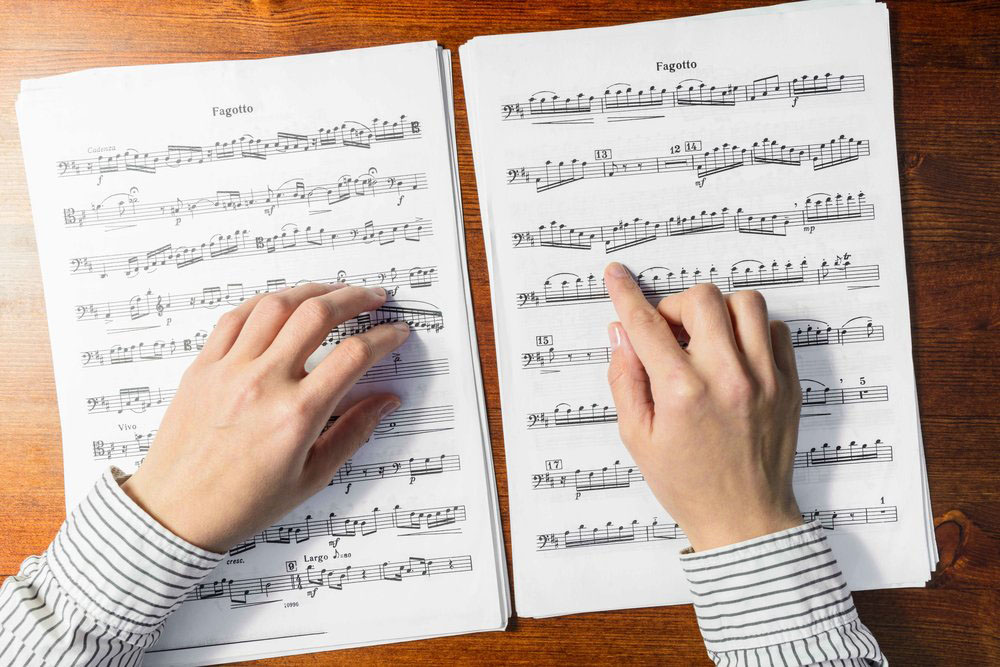2 Min Read
8 Exercises to Train Your Ears
What musician doesn’t want stronger ears? Having stronger ear training skills positively impacts almost every aspect of your musicianship. If you want better tone, intonation, balance, blend, expression, compositions, or transcriptions, then ear training is for you. Here are 8 ways you can expand your ears today:
1. Sing before you play
If you are an instrumentalist, try singing your parts before you play them. You don’t have to have a beautiful tone or a wide range, but generally, you should be able to sing the notes that you are hoping to generate on your instrument. If you can’t match the pitches of your music, try singing something more simple. If you are struggling to meet pitches with your voice, this is a sign that your ears are weaker than your instrumental abilities. Practice singing and matching pitches every day and your ears will expand tremendously.
2. Chromatic scales
If you are comfortable singing and matching basic pitches, it’s time to move on to chromatic scales. In a comfortable octave within your range, slowly sing a one-octave chromatic scale up and down, starting and ending on the same pitch. Play the root note as a drone and hold it throughout the exercise to train your ears to sing the half-step intervals in relation to this base pitch. It’s harder if you sing the scale all on one seamless syllable, such as “oo”. This exercise will help with your pitch and your vocal control. Here’s what it looks like:

3. Interval exercises
Luckily for you, there are literally thousands of exercises that exist around training your ears to hear intervals. Most vocal exercises will give you some ear training development. You can even make up your own songs and games that focus on interval training!
Here’s a little game that will help you quickly learn to identify and sing your intervals:
- Write all of your intervals on flash cards, popsicle sticks, or something else that you can grab out of a bowl.(Intervals to write include: Unison, minor 2nd, major 2nd, minor 3rd, major 3rd, perfect 4th, tri-tone, perfect 5th, minor 6th, major 6th, minor 7th, major 7th, and octave)
- Write out the 12 note names on a different set of flash cards, or whatever else you are using.
- Sitting at a piano or with your instrument, draw one of each. The chosen note will be the first note of your interval. As quickly as possible, try to sing the chosen interval. Be sure to check yourself on your instrument in order to stay on track.
4. Perform in an ensemble
Joining a large ensemble can help you develop sensitivity, balance, intonation, and blend: all crucial ear training components. Join a local choir and make blending with those around you your number one goal. While singing, try to hear everyone around you louder than you hear yourself. Being a part of a large ensemble where you are not meant to stick out is crucial training for anyone who is serious about developing strong ear skills.
5. Start playing by ear
Make playing by ear a crucial part of your practice routine. Give yourself at least 10 minutes per day to jam to anything: a song on the radio, the bass line to a piece you know, or a song you’ve been working on. Playing without reading music is such an important skill to develop. Once you gain the confidence to play without always needing something to read, you will become an unstoppable improviser, insanely creative, and you will enjoy the freedom you have on your instrument so much more than you ever did before.
6. Change the pitch of your audio
We all have a handful (or hundreds) of favourite songs and pieces. Have you ever imagined what your favourite song would sound like in a new key? There are many apps and tools that can be used to change the frequencies of an audio track. I like to use the free, simple, Online Tone Generator. Try uploading one of your favourite songs into this system, and listen to it shift as you choose what percentage or fraction of semitones you’d like it to change. This tool can help open your ears to new sounds, especially since you can listen to music in non-“western standard” keys. Have you ever heard a song in G# major and three quarters? There are an infinite number of “keys” available to the human ear, but we choose to tune our instruments and ourselves to just a handful. Expand your ears by taking your favourite song out of your sonic comfort zone.
Warning: this is highly addictive and insanely fun
7. Practice sight reading
Sight read, every day. With endless free music available to you online, there are no excuses to skip this crucial step in your development. Do it every day.
8. Practice transcribing
This tip is a hard one to commit to. Trust us, we know. Transcribing is exhausting, frustrating, and challenging, but the benefits to your musicianship feel exponential and inspiring. Not sure how to get started? Check out our 10 Transcription Tips or give us a shout if you need some additional assistance or advice. We’re always here if you need a little help.





